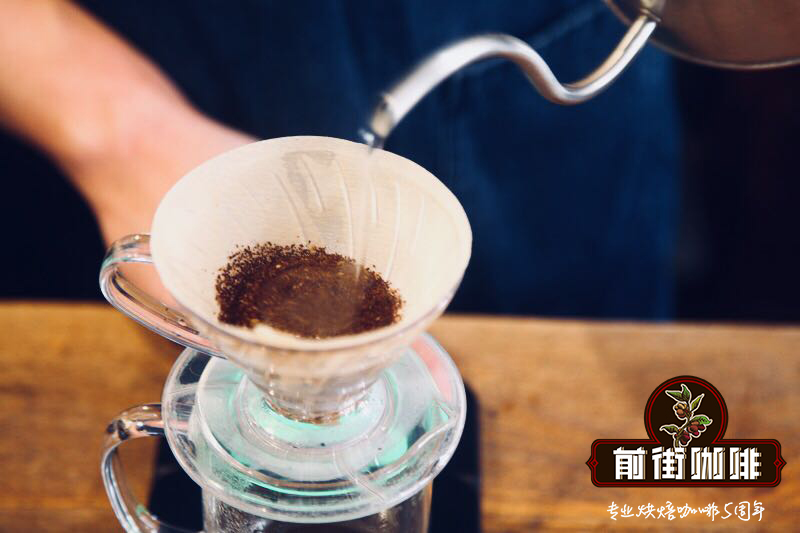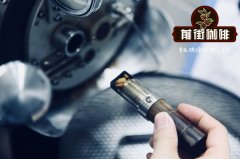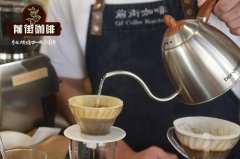Flavor characteristics of Rwandan Coffee in Rwanda Kupec Cooperative (Rwanda COOPAC Coop)

Professional coffee knowledge exchange more coffee bean information please follow the coffee workshop (Wechat official account cafe_style)
Product name: Kupec Cooperative of Rwanda (Rwanda COOPAC Coop)
Production area: Gisenyi
Altitude: 1500-1900 m
Soil: volcanic soil
Variety: bourbon species (Bourbon)
Treatment method: washing treatment method
Certification: fair Trade (FLO Fair Trade)
Award: 1st in 2010 EAFCA, 1st and 9th in 2010 COE, 8th, 12th and 24th in 2008 COE
Rwanda is located in the East African Plateau, high altitude and mild climate, is actually quite suitable for coffee growth. In 1904, German missionaries first introduced coffee here. Because coffee was the only agricultural product that farmers could directly exchange for money at that time, and the Lu government vigorously promoted it, the whole country began to grow coffee in large quantities. Coffee is mainly grown near the western and central capital Kigali, while most of the eastern region (1/7 of the total area of Yolo) has national parks that prohibit coffee cultivation. Almost all coffee in Lu is produced by small farmers. It is estimated that there are more than 500,000 small coffee farmers in the country, and most of the average area of each farm is less than one hectare. In addition, transport inconvenience has also had a significant negative impact on the country's coffee exports: as Rwanda is located on the inland plateau of Africa without an adjacent sea, coffee exports have to pass through Uganda before being transferred to the port of Mombasa in Kenya for export to other countries, long-distance overland transportation is not easy for quality control. Rwanda, originally a German colony from the late 18th century to the early 19th century, was ruled by Belgium after the end of World War I and was not independent until the 1960s. But the independent regime was dominated by ethnic minorities with less than 20% of the population, and inter-ethnic discontent began to accumulate. Although the coffee industry has been promoted since the German rule, and by the early 1990s, the annual export volume of coffee has reached 45000 tons, unfortunately in April-July 1994, a large-scale genocide broke out due to long-term accumulated racial problems. 1 million of the population was killed or slaughtered in less than 100 days, and the export operation was almost completely shut down by the turbulent political situation. Coupled with the low international prices of raw beans at that time, most farmers could no longer make a living by growing coffee, but switched to other food crops for temporary food and clothing, which dealt an almost devastating blow to the coffee industry in Rwanda. Until recent years, the United States Agency for International Development (USAID) has assisted local farmers to grow boutique coffee, build washing plants, set up cooperatives, provide relevant education and training, and train professional cup testers. Coffee production has only gradually recovered, and now about 25000 tons of raw beans are available for export a year. The Kupec Cooperative was established in April 2001. after 10 years of development, the Kupac Cooperative has 2200 members and has expanded to three washing treatment plants. The cooperative is located in the Gisenyi producing area in western Rwanda closest to the Congolese border, with several washing plants built on an alpine lake, Lake Keefe (Lake Kivu), which is 1450 meters above sea level, and hundreds of small farms scattered on a 1,500-meter plateau on the east side of the lake. This area is located in the volcanic zone, high-altitude cool and fertile volcanic loam and lakes adjust the humid and mild climate to provide an excellent growing environment for coffee trees, while Lake Keefe also brings clean water to the washing treatment plant. Such excellent natural conditions are not common throughout the African continent! For the Kupec cooperative, it is not so much the production center of coffee beans as the important practice center of local human / economic development and environmental sustainable management: it is committed to protecting water sources (such as the treatment of waste water and peel of coffee berries). Will not be discharged directly into the lake. Instead, use irrigation and fertilization), protect hillside soil and biological resources (such as encouraging farmers to plant shade trees in coffee plantations), guide farmers to improve their cultivation techniques, and use cooperative surplus to build bridges / roads / schools. No wonder the cooperative has developed rapidly, and the quality of coffee beans has not declined but improved year after year! In the recent COE and EAFCA competitions, the Kupec Cooperative is not only a regular, but also rising year after year: full-bodied toast mixed with citrus fruits and dried fruits such as longan and figs, full acidity and solid taste, rich floral aromas with a sweet finish of smoked and pickled candied fruits. Such a refined performance is worthy of the best coffee producer in Rwanda!
- Prev

Flavor characteristics of Rwandan Coffee in COOPAC Cooperative of Grade A Kubek Manor, Rwanda
Professional coffee knowledge exchange more coffee bean information please follow the coffee workshop (Wechat official account cafe_style) country: Rwanda product name: COOPAC cooperative Rwanda Grade A production area: Lake Kivu level: a treatment method: washing altitude: 1450m-1900m varieties: Bourbon COOPAC Cooperative is located in Kivuhu, Rubavu region, west-central Rwanda.
- Next

Flavor characteristics of Ugandan Coffee baked by SL14 in Kawahibi, Uganda
Professional coffee knowledge exchange more coffee bean information please follow Coffee Workshop (Wechat official account cafe_style) Uganda Kawa Cooperative Hibikabewa SL14 Solar Uganda Kawacom Sipi Kabeywa SL14 natural production countries: Uganda Uganda production area: Aigang Mountain Mount Elgon;Kapchorwa Province; East Uganda Eastern Uganda
Related
- Detailed explanation of Jadeite planting Land in Panamanian Jadeite Manor introduction to the grading system of Jadeite competitive bidding, Red bid, Green bid and Rose Summer
- Story of Coffee planting in Brenka region of Costa Rica Stonehenge Manor anaerobic heavy honey treatment of flavor mouth
- What's on the barrel of Blue Mountain Coffee beans?
- Can American coffee also pull flowers? How to use hot American style to pull out a good-looking pattern?
- Can you make a cold extract with coffee beans? What is the right proportion for cold-extracted coffee formula?
- Indonesian PWN Gold Mandrine Coffee Origin Features Flavor How to Chong? Mandolin coffee is American.
- A brief introduction to the flavor characteristics of Brazilian yellow bourbon coffee beans
- What is the effect of different water quality on the flavor of cold-extracted coffee? What kind of water is best for brewing coffee?
- Why do you think of Rose Summer whenever you mention Panamanian coffee?
- Introduction to the characteristics of authentic blue mountain coffee bean producing areas? What is the CIB Coffee Authority in Jamaica?

